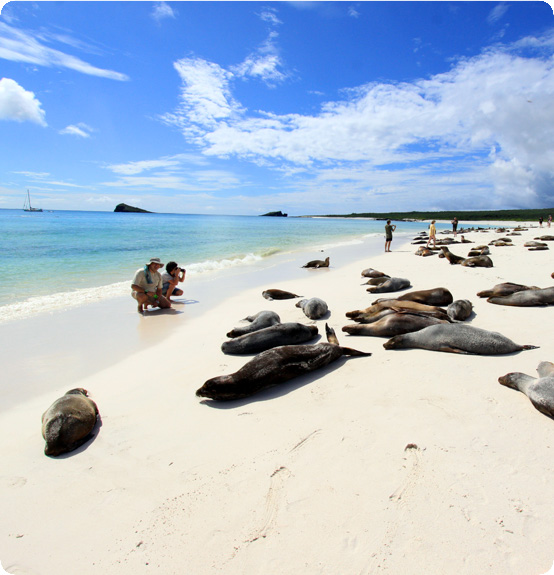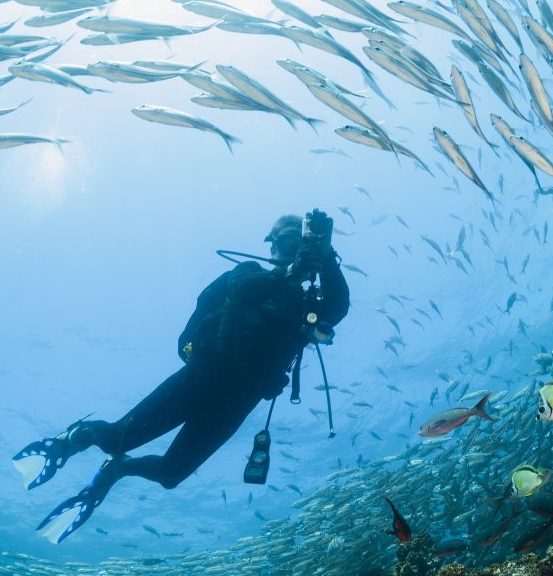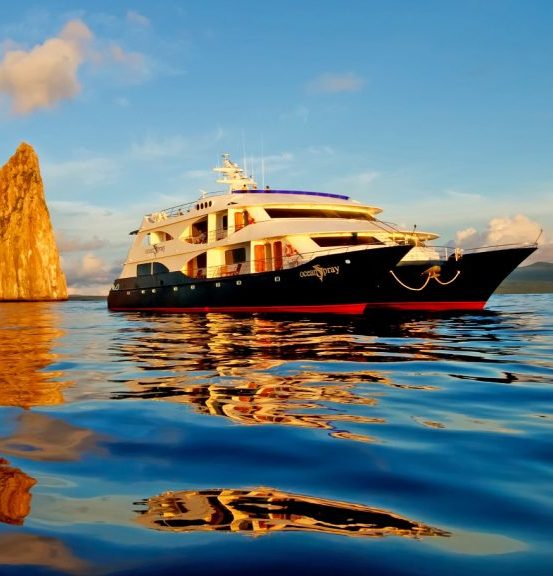A trip to the Galápagos Islands in Ecuador – designated a Natural World Heritage Site by UNESCO – is a unique experience that changes visitors’ perception of the planet and the forces that have shaped it. It’s a milestone in thousands of travelers’ bucket lists because when looking for intimate encounters with nature there is no place on earth that resembles this one. Ancestral giant tortoises, curious and playful sea lions, land iguanas feeding themselves with cacti, blue-feet boobies, penguins, and many more non-flying species. Groups of dolphins or orcas following the shipping vessels, allow us to imagine how life was thousands of years ago.
After an hour and half flight from Quito or Guayaquil, you will reach this remote paradise of volcanic origins. Nineteen big islands and more that 40 rocky islets form the archipelago, home to 30.000 inhabitants, spread out across four populated centers. Puerto Ayora is located at the Santa Cruz Island, adjacent to Baltra. It offers some of the best touristic facilities in the Galápagos, and hosts the Charles Darwin Research Stations. Visitors can learn here about the giant tortoise reproduction programs as well as other efforts to preserve the ecosystems and fauna of the islands.
Short 4-day expeditions; cruises or hotel stays; visits that offer breathtaking views of impressive landscapes; adventures that let you see a massive array of the emblematic species that live on the islands; shipping vessels that travel to the most remote places in the archipelago… There are many alternatives and options to consider when visiting the Galapagos, but we highly recommend doing a guided expedition in order to get the best experience.
You can choose a comfortable 40-90 people cruise that will take you to the farthest islands. This journey of 5 to 10 days will introduce you to the most iconic species of the Galapagos. For those seeking a more personalized experience, another option is to travel on a smaller yacht where naturalist guides will be with you during the whole trip, and will share with you fascinating facts that will allow you to understand what Charles Darwin went through when he arrived to this world in 1835. It was this episode that led to his evolution theory development.






